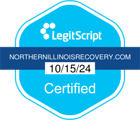The use of marijuana directly affects brain function. Specifically, the parts of the brain responsible for:
- Learning
- Memory
- Attention
- Decision-making
- Coordination
- Emotion
- Reaction time
However, does weed kill brain cells? Some researchers say “yes” while others disagree.
Although legalizing marijuana is happening in more and more states, concerns still linger about its long-term effects on the adolescent brain. Among the concerns of critics is the issue that, despite age limits, legalization might make marijuana easier for young people to access. And the developing brains of adolescents may be especially vulnerable to lasting damage from the drug.
National Institute on Drug Abuse (NIDA) researchers established that there are a lot of questions concerning the long-term effects of marijuana. However, there is increasing literature pointing out that starting young and using frequently may disrupt brain development.
Medical Use Marijuana
Some of these benefits come from cannabidiol (CBD), the chemical part of the marijuana plant that doesn’t produce mind-altering effects. What’s well known is that the signature high from marijuana comes from a psychoactive element known as tetrahydrocannabinol (THC).
Both of these chemical components attach to cannabinoid receptors in your brain and all over your body. The differences in the effects of each are because of the different ways they attach to these receptors. But there is still much that needs to be learned about this and other chemical compounds in marijuana.
What are the Short-Term Effects of Marijuana on the Brain?
- Thinking
- Attention
- Memory
- Movement
- Coordination
- Perception of time
Heavy use during adolescence or early adulthood has been linked to an unfortunate set of outcomes including:
- Poor academic performance
- Higher dropout rates
- Increased dependence on welfare
- Higher unemployment
- Lower satisfaction with life
Still, it’s not clear that marijuana should be blamed for everything. Some researchers have proposed that factors such as the influence of peers, emotional distress, or a tendency to problem behavior could prompt an individual to drug use as well as poor life consequences. So, did marijuana cause poor outcomes, or is it part of a number of vulnerability factors?
Longitudinal Studies
There have been few longitudinal (long-term) studies that follow the progress of young people before and after they take their first hit of marijuana. But one study from New Zealand showed interesting findings. A team of psychologists collected the data and found that persistent use of marijuana was associated with a decline in IQ, even after considering the educational differences. The most persistent users had a drop in neuropsychological functioning equal to about 6 IQ points.
What are the Long-Term Effects of Marijuana on the Brain?
These effects may last for a long time or may even be permanent. Still, other studies have not found any substantial structural differences between the brains of people who do and do not use marijuana. Once again, more research is necessary to fully understand the effects.
The effect of marijuana use on the brain depends on several factors including the amount of THC in marijuana (the concentration; strength), how often it’s used, and whether other substances (usually tobacco or alcohol) are used at the same time.
It’s also possible for long-term effects on the brain to be caused by something besides marijuana such as genetics, home environment, or other unknown factors.
Can Marijuana Affect Your Mental Health?
Distorted Thinking
Marijuana can also cloud your senses and judgment. It can:
- Heighten your senses–brighter colors, louder sounds
- Distort your perception of time
- Impair your motor skills, making driving more dangerous
- Lower inhibitions–taking chances, having risky sexual encounters
What’s the Difference Between Synthetic and Natural Marijuana?
Natural marijuana is harvested from the Cannabis sativa plant. In the cannabis plant, there are hundreds of chemicals, or cannabinoids but THC and CBD (cannabidiol) are the most well-known.
Synthetic cannabinoids (SCBs) are classed as new psychoactive substances (NPS) and are created in illicit laboratories. Synthetic marijuana is known by other names such as:
- Fake weed
- K2
- Spice
- Black mamba
- Scooby Snax
- Moon rocks
SCBs are illegal substances meant to be similar in chemical structure to naturally growing marijuana in order to cause similar effects. Often, people think it’s a safe alternative to marijuana but, in reality, synthetic marijuana is frequently stronger and unpredictable. SCBs can be 2–100 times more powerful than THC.
Unfortunately, you may not be able to tell the difference between natural and synthetic marijuana. Synthetic marijuana behaves differently than natural marijuana in the body. Because they act on the same receptors as natural marijuana, they lead to the signature euphoric high. However, they bind to the receptors with a higher strength so that high isn’t always euphoric or even pleasant. As a group, they attach more tightly to the cannabinoid receptors, sometimes producing more serious side effects.
Many people don’t expect these side effects. Especially people who assume the effects will be similar to natural marijuana. The main side effects of synthetic marijuana happen because of the way it affects receptors in the brain including:
- Anxiety
- Panic attacks
- Agitation
- Problems with thinking or concentrating
- Visual or auditory hallucinations
- Suicidal thoughts or behaviors
- Violent or impulsive behavior
- Seizures
And that’s not all the harmful side effects. Synthetic marijuana doesn’t just affect your brain. Since there are cannabinoid receptors all over your body, it can cause an array of harmful side effects. Other organs that might be affected include:
- Heart–synthetic cannabinoids can cause a racing heart rate or high blood pressure. Some people have had chest pain and even strokes and heart attacks.
- Digestive system–typically, marijuana makes people hungry. But strong doses can cause severe nausea, abdominal pain, and uncontrollable vomiting.
- Kidneys–synthetics can directly damage the kidneys and even be serious enough to cause kidney failure.
- Muscles–it may be mild like cramps or twitching, or it may be severe and cause extensive muscle breakdown.
Marijuana Use Disorder
Some marijuana users do develop marijuana use disorder. This means that they can’t stop using it even though it’s causing social and health problems in their lives. About 3 in 10 people who use marijuana will experience marijuana use disorder. Furthermore, studies reveal that the risk of developing marijuana use disorder is higher in people who started using marijuana during their adolescence and who use it more frequently.
Withdrawal Symptoms
Cannabis withdrawal symptoms usually begin 24 to 48 hours after the last use. This early phase includes symptoms such as:
- Insomnia
- Appetite loss
- Shakiness
- Irritability
- Sweating and chills
These symptoms tend to peak at days 2 through 6 and improve as THC levels reduce over 7 days of abstinence.
Marijuana and Polysubstance Use
Psychiatric comorbidity (occurring at the same time) is also frequently seen. The two most common mental health disorders, besides substance use disorders, are anxiety and mood disorders. Individuals struggling with this type of dual diagnosis need specialized care to address the two conditions at the same time.
Marijuana Addiction Treatment
Harm reduction strategies for detoxification haven’t been well studied. But a step-by-step slow reduction in the use of cannabis or use of lower THC products over an extended period may reduce the severity of withdrawal symptoms. But if withdrawal makes depression, anxiety, and psychosis worse, then the risks are increased and regular monitoring may be necessary.
No medications have been approved to manage the cannabis withdrawal syndrome. Short-term medications to treat specific withdrawal symptoms (nausea, anxiety, sleep disturbance) to improve the comfort of the individual and keep them in treatment.
The mainstay of managing marijuana withdrawal has been supportive counseling, psychosocial education (the relationship between social factors and individual thoughts), and behavioral therapies.
Your Future Begins With Northern Illinois Recovery Center
You can lay the groundwork for a substance-free future at Northern Illinois Recovery Center. We provide help for individuals struggling with cannabis use disorder and other substance use disorders in the counties that surround Chicago as well as the city itself.
We can provide a comprehensive layered system of programs so you can enter treatment where appropriate and continue your treatment until you are confident and ready to face the world independently. Don’t let your struggle go on. Contact us today.



